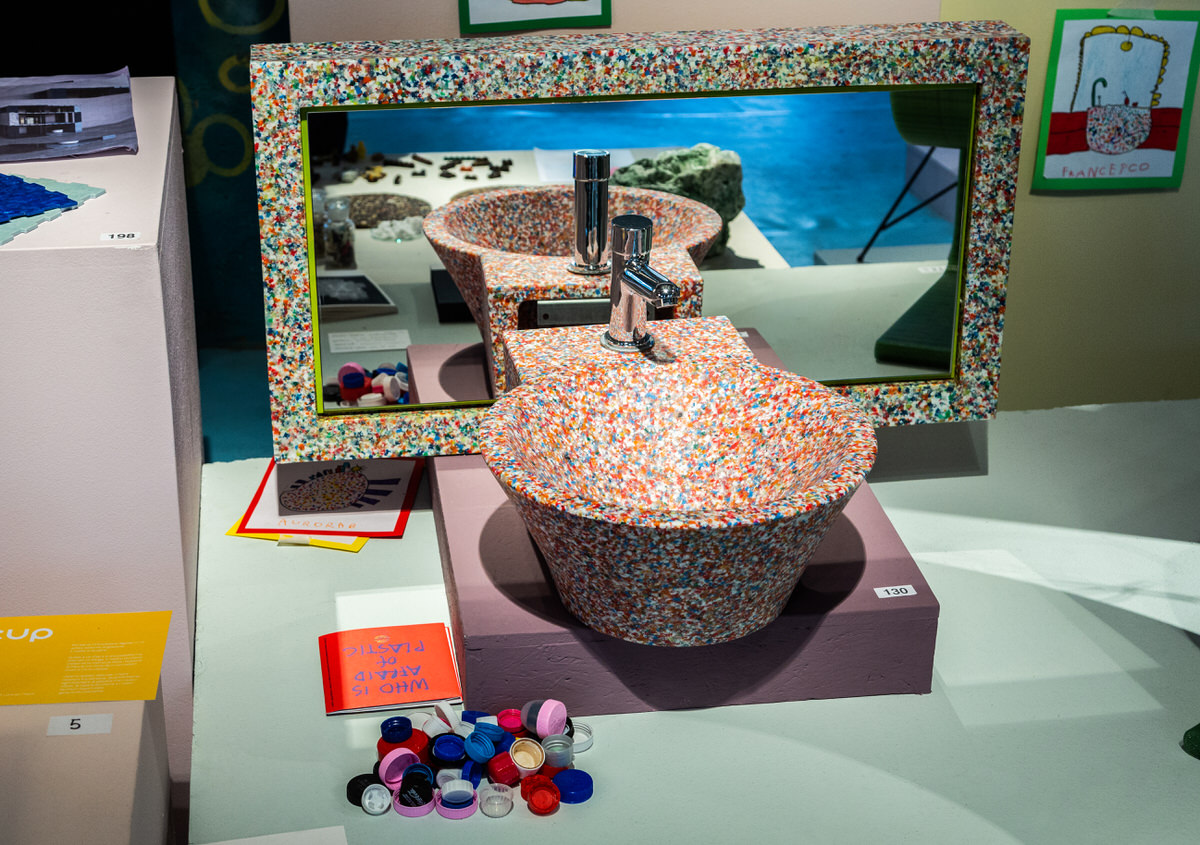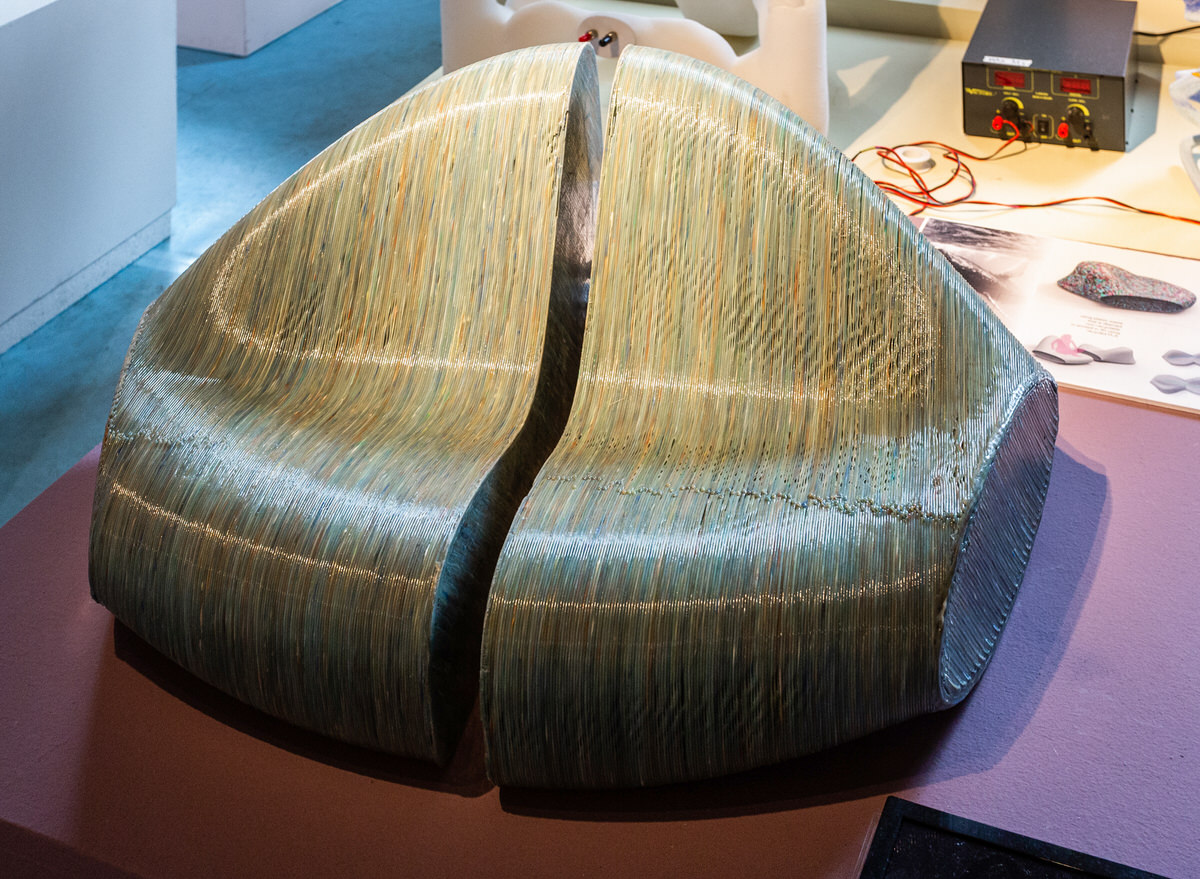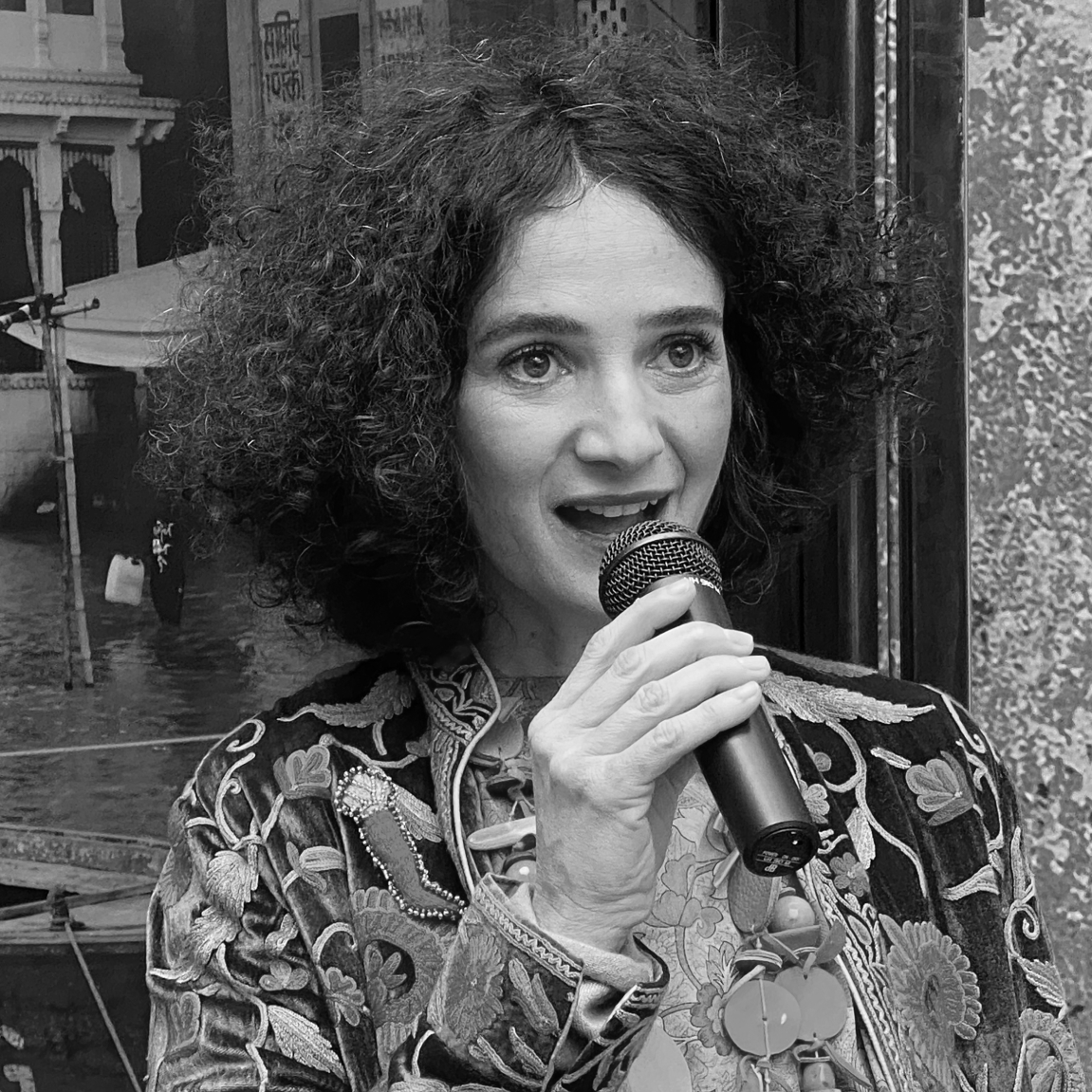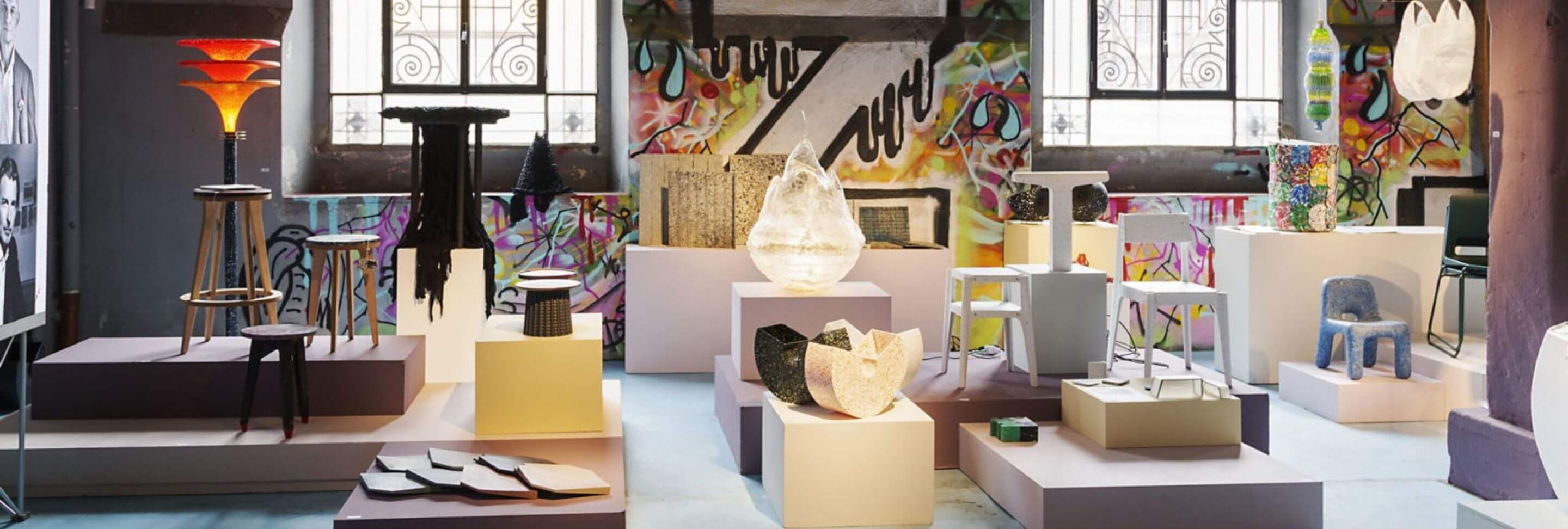DESIGN
CONTEXT
Design is a process before it becomes a product. We know that linear systems are no longer sustainable, especially with the advent and widespread use of synthetic and composite materials. Circular Economy seems to be the only compatible way to contrast the high demand of limited resources for a growing population. Our generational goal is to mimic nature’s cycles of birth, growth, death and regeneration – which in the life of our things means conception, product development, production, distribution, use, disposal and regeneration. In one word: better design. Low cost objects are designed to have a short lifespan, and this has altered the way we perceive much of what we use. The temptation to have new things has replaced our affection towards them. In the past decade plastic has gone from the material of choice to a critical, harmful ingredient. On the other hand, in the collective imagination, recycled plastic is poor, ugly and second rate. In one word, it’s waste, and so it should remain. In reality, it is an abundant resource and the challenge is to engineer it into materials and products that are beautiful, functional and ecological. Good design is the best way to reverse consumers’ approach to recycled goods. It can be done.
CHALLENGE
The Prize wants to bring recycled plastic into our daily lives, in the things we use at home and outdoors, in both private and public spaces. Plastic is an extraordinary class of materials with infinite potential to be used and re-used. Only 2% of recycled plastic becomes something new. How can we engage the design community to prefer this abundant resource to virgin plastic?
HOME TEXTILES
CONTEXT
Second to oil, the clothing and textile industry is the largest polluter in the world. Safety regulations can make chemical additives an unfortunate necessity, with the unwanted consequence of hindering recycling and re-use of these materials. The amount of textile waste, both pre- and post-consumer is constantly growing each year, with numbers reaching billions of tons – representing 20% of global production waste. The biggest hurdle to overcome, in our collective consciousness, is the notion that sustainable textiles are less attractive and performing compared to conventional ones. Just like in the fashion industry, low-cost home furnishings that are mass-produced have become mainstream and the urge to replace what could be fixed or renewed has become commonplace. Textiles used indoors contribute more than people understand to our well-being, yet, while we’re not prepared to compromise on style, we do, inadvertently choose furnishings that are hazardous both to us and the environment. For carpets alone, in Europe, approximately 1.6 million tons of post-consumer carpet material is discarded annually, 60% ends up in landfills, 38% is incinerated and only 2% is recycled. How can we produce textiles that are beautiful, functional, healthy and can be re-used?
CHALLENGE
To design synthetic recycled textiles without added glues or hazardous chemicals.
To reduce the level of toxicity, while meeting and complying with safety standards and regulations.
To enable the recycling and re-use of the material without compromising quality.
PACKAGING SOLUTIONS
CONTEXT
Single-use retail packaging waste is growing at an alarming rate and poses a big challenge to the design community. With modern consumption patterns shifting from physical to online retail, and goods being shipped globally, the logistics and material footprint of packaging have drastically increased in complexity. Goods go through many phases of packing and unpacking before they reach the hands of the final consumer. Huge amounts of waste are generated throughout the supply chains, from manufacturers, distribution centers, digital inventories and local logistic delivery systems. Retail packaging is made up of mostly non-degradable high-performance polymers or composite fused materials, laminated with organic fiber and thin metal films, to pass mechanical drop tests, food safety and environmental resistance standards. The most important function of retail packaging is to protect the product from contamination, water damage and impact during transport. Simply labeling things “degradable or recyclable” to make consumers feel less guilty about their convenience-based behavior is just marketing. Everything is degradable sooner or later but the time frame is crucial.
CHALLENGE
Single material retail packaging design that can be fully recycled or fully degradable.
Packaging designed for multiple lives: adaptable to different sizes/product categories, extending the use from inventory to store, store to display, display to consumer, transport to warehouse or store, to the consumer, and finally to recycling bins.
CONSCIOUS INNOVATION PROJECTS
CONTEXT
Social responsibility is a crucial element of innovation. We need more respect and awareness, in regards to who makes our things and their working conditions, how production standards affect local communities and the environmental impact of mass distribution. Everything comes to us with a story, which often remains untold, therefore consumers unknowingly contribute to an anonymous collective act of degradation. Transparency and accountability are key ingredients to bring consumers on board and making them collaborative agents of change. In this frame of mind, re-using and recycling become the norm, resulting in new processes, materials, supply chains and narratives.
CHALLENGE
The Prize will be awarded to people and organizations committed to experiment, innovate, invent. The value of the projects is not only in the final outcome, but in the process itself.









































